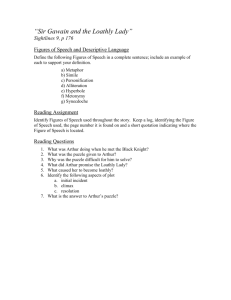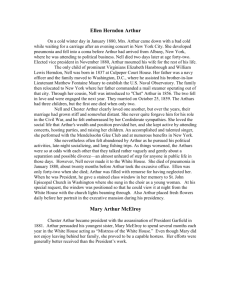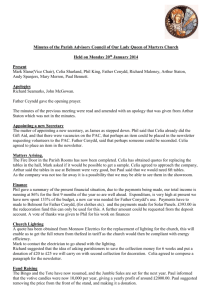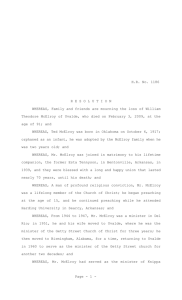First Lady Project
advertisement
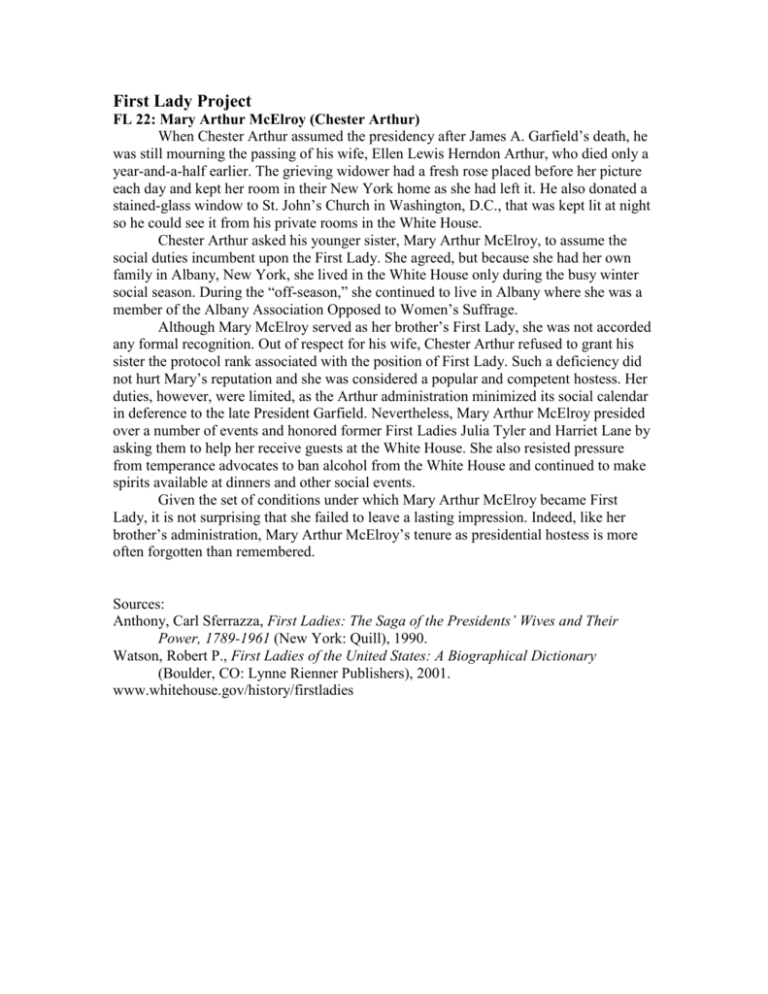
First Lady Project FL 22: Mary Arthur McElroy (Chester Arthur) When Chester Arthur assumed the presidency after James A. Garfield’s death, he was still mourning the passing of his wife, Ellen Lewis Herndon Arthur, who died only a year-and-a-half earlier. The grieving widower had a fresh rose placed before her picture each day and kept her room in their New York home as she had left it. He also donated a stained-glass window to St. John’s Church in Washington, D.C., that was kept lit at night so he could see it from his private rooms in the White House. Chester Arthur asked his younger sister, Mary Arthur McElroy, to assume the social duties incumbent upon the First Lady. She agreed, but because she had her own family in Albany, New York, she lived in the White House only during the busy winter social season. During the “off-season,” she continued to live in Albany where she was a member of the Albany Association Opposed to Women’s Suffrage. Although Mary McElroy served as her brother’s First Lady, she was not accorded any formal recognition. Out of respect for his wife, Chester Arthur refused to grant his sister the protocol rank associated with the position of First Lady. Such a deficiency did not hurt Mary’s reputation and she was considered a popular and competent hostess. Her duties, however, were limited, as the Arthur administration minimized its social calendar in deference to the late President Garfield. Nevertheless, Mary Arthur McElroy presided over a number of events and honored former First Ladies Julia Tyler and Harriet Lane by asking them to help her receive guests at the White House. She also resisted pressure from temperance advocates to ban alcohol from the White House and continued to make spirits available at dinners and other social events. Given the set of conditions under which Mary Arthur McElroy became First Lady, it is not surprising that she failed to leave a lasting impression. Indeed, like her brother’s administration, Mary Arthur McElroy’s tenure as presidential hostess is more often forgotten than remembered. Sources: Anthony, Carl Sferrazza, First Ladies: The Saga of the Presidents’ Wives and Their Power, 1789-1961 (New York: Quill), 1990. Watson, Robert P., First Ladies of the United States: A Biographical Dictionary (Boulder, CO: Lynne Rienner Publishers), 2001. www.whitehouse.gov/history/firstladies
